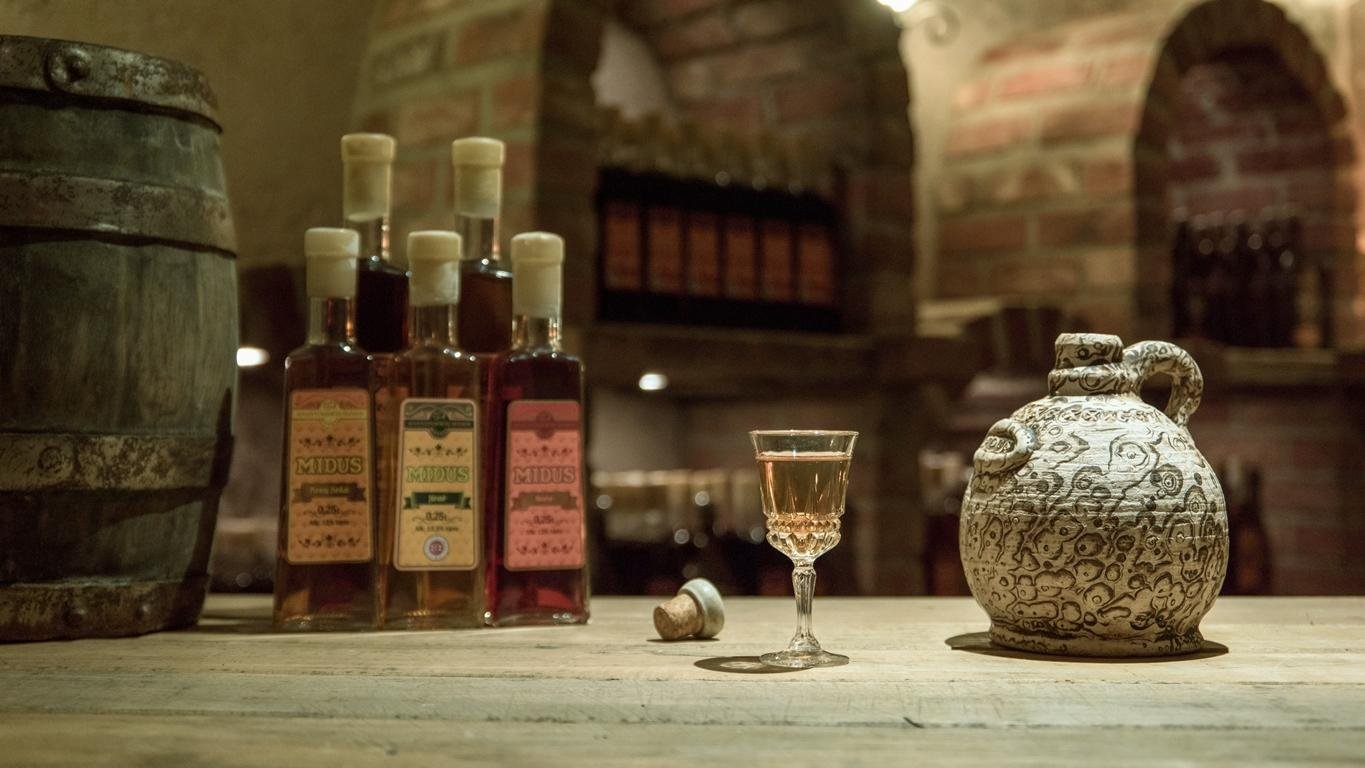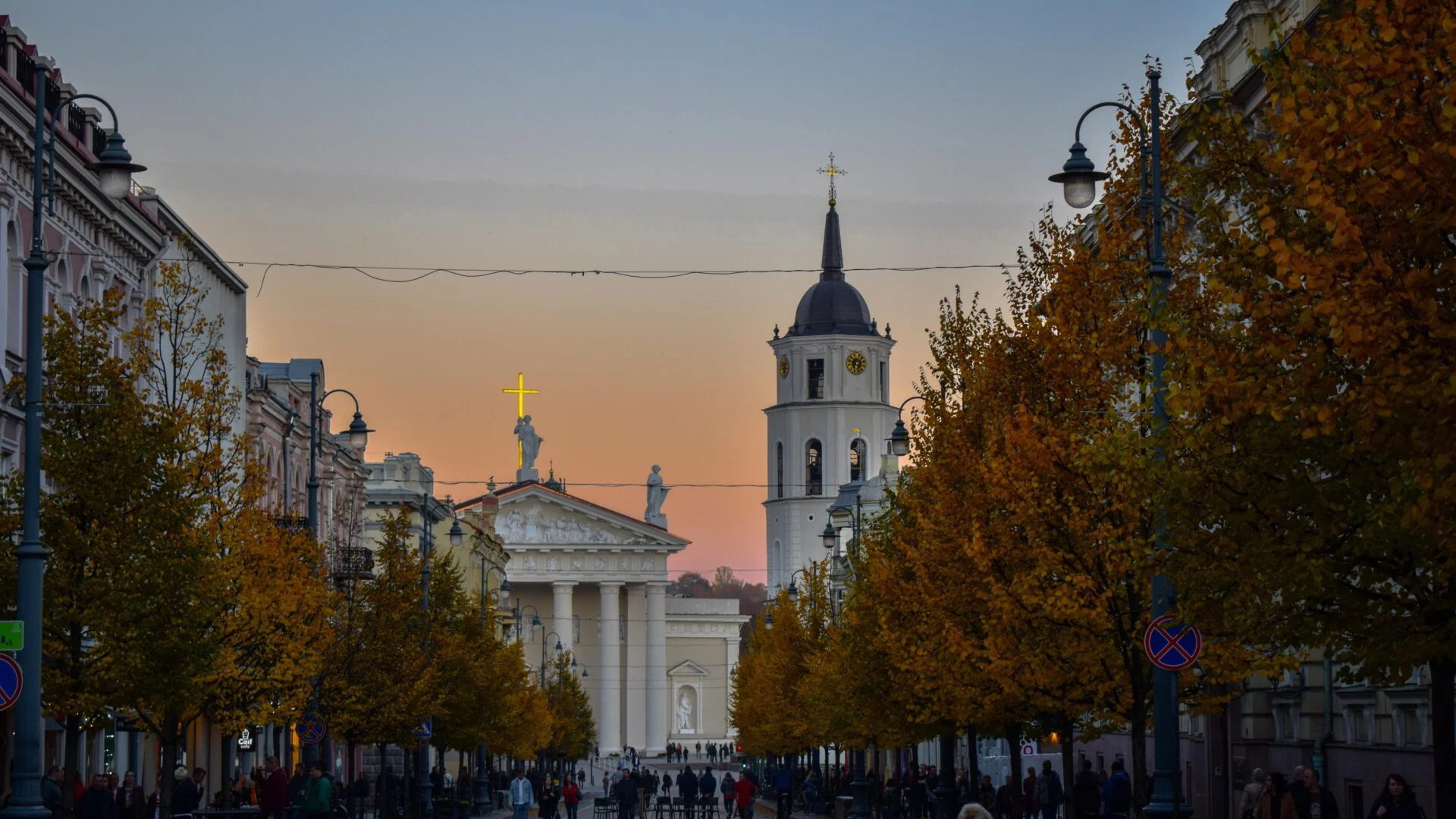Introduction to Lithuanian Traditions
Lithuanian traditions encompass a rich and diverse array of cultural practices that reflect the nation’s historical journey and societal values. These customs have been shaped by various influences over the centuries, including pagan rituals, Christian beliefs, and the unique experiences of the Lithuanian people. As a result, traditions play an essential role in the cultural identity of Lithuania, transcending generations and preserving the heritage that has defined this nation.
The importance of these traditions becomes particularly evident when examining their connections to agrarian cycles. Many Lithuanian customs are intricately tied to the agricultural calendar, showcasing a deep respect for nature and the changing seasons. For instance, seasonal festivals such as Užgavėnės, celebrated before Lent, highlight the cyclical nature of life and the community’s reliance on agricultural practices. This festival, characterized by vibrant masks and traditional foods, represents a psychological release from winter and is a joyous acknowledgment of the arrival of spring.
Throughout history, Lithuanian traditions have been adapted and preserved, merging ancient practices with contemporary values. The resilience of these customs is evident in local festivals like Jūratė and Kastytis, which celebrate love and community while drawing on folklore and mythology. Such events serve to reinforce social bonds and strengthen the collective identity of the Lithuanian people. Additionally, family gatherings during various holidays often feature traditional music, dance, and food, further embedding these practices into everyday life.
In conclusion, the intricate tapestry of Lithuanian traditions emphasizes their significance in shaping the nation’s cultural landscape. As these customs continue to be embraced and celebrated, they provide insight into the shared values and history of the Lithuanian society, ensuring that the legacy of past generations remains alive for future ones.
Kūčios: The Christmas Eve Feast
Kūčios, the traditional Christmas Eve dinner in Lithuania, holds a significant place within the rich tapestry of Lithuanian culture and its seasonal celebrations. This sacred meal is characterized by a rich array of customs and rituals that emphasize family togetherness and spiritual reflection. The meal typically begins once the first star appears in the night sky, symbolizing the Star of Bethlehem and marking the commencement of this important spiritual occasion.
The centerpiece of Kūčios is the sharing of twelve traditional dishes, each symbolizing one of the twelve apostles. These dishes primarily consist of vegetarian fare, aligning with the practices of fasting observed during the lead-up to Christmas. Common offerings include beetroot soup, fried fish, sauerkraut, and various types of dumplings. The inclusion of these dishes serves not only to satisfy the palate but also to reflect the bounty of nature and the essence of communal sharing. Families often collaborate to create these dishes, thereby reinforcing familial bonds and the spirit of cooperation in preparation.
An integral ritual involves the sharing of a ceremonial wafer, known as “oplatek,” which is broken and shared among family members prior to the feast. This act symbolizes forgiveness and the unity of the family, fostering a sense of harmony and goodwill. It is customary to express heartfelt wishes and blessings as the wafer is shared, further enhancing the communal spirit of the occasion. Alongside the meal, many families include traditional carols, known as “kalėdiniai”, and partake in prayers which elevate the evening’s solemnity.
Kūčios stands as a poignant reminder of the importance of family, heritage, and faith, deeply rooted in the Lithuanian cultural identity. The intention behind this feast is not only to delight in the flavors and fragrances of homemade dishes but also to celebrate the values of love and companionship during this cherished holy night.
Vėlinės: Honoring the Departed
Vėlinės, or the Day of the Dead, holds significant cultural importance in Lithuania, serving as a poignant time for individuals and families to remember and honor departed loved ones. Observed on November 2nd, this day provides an opportunity for reflection and remembrance, deeply interwoven with Lithuanian custom and spirituality. During Vėlinės, it is customary for people to visit cemeteries, ensuring that the memory of those who have passed remains alive in the hearts of their families.
One of the key observances of Vėlinės is the lighting of candles. This act symbolizes the guiding light for the spirits of the departed as they return to their loved ones during this sacred time. Families gather at gravesites, often bringing flowers and food offerings along with the candles. The flickering flames of the candles create a serene atmosphere as they illuminate the graves, creating a sense of reverence and connection to those who have passed on. The collective act of lighting candles also fosters a communal experience, where families and friends come together in solidarity, sharing stories and memories of those they have lost.
Over the years, Vėlinės has transformed, with some leaning towards more modern interpretations of the tradition. While the fundamental essence of remembrance remains, contemporary practices might include digital tributes or the use of social media platforms to share memories, photos, and condolences. This evolution reflects a merging of old and new, allowing younger generations to engage with their heritage in ways that resonate with their experiences. Nevertheless, the core idea of honoring and remembering those who have left remains integral to Vėlinės, demonstrating the resilience of Lithuanian traditions in adapting to changing times.
Užgavėnės: The Pre-Lenten Festival
Užgavėnės is a traditional festival celebrated in Lithuania, marking the final day before Lent begins. This vibrant festivity typically occurs on the Tuesday before Ash Wednesday and serves as a farewell to the cold winter months while welcoming the upcoming spring. The name “Užgavėnės” translates to “the day of eating well,” and as such, it is characterized by a series of customs centered around feasting, masquerading, and merrymaking.
One of the most notable features of Užgavėnės is the tradition of dressing up in elaborate costumes and masks. Participants wear striking outfits that often represent various characters, such as animals and mythological figures. These vibrant disguises serve to chase away the winter spirits and bring forth the vitality of spring. The processions of masked figures through the streets often include music, dancing, and theatrical performances, creating an exhilarating atmosphere that engages the community.
Culinary traditions play a crucial role in this festive occasion, with various traditional foods being prepared and consumed. Popular dishes include pancakes known as “blynai,” rich meat stews, and sweet pastries. The abundance of food symbolizes prosperity and serves as an opportunity to indulge before the somber season of Lent begins. In some regions, the festival also features unique foods like “skilandis,” a type of cured sausage, highlighting the regional culinary diversity within Lithuania.
In recent years, Užgavėnės has seen modern adaptations, attracting not only locals but also tourists eager to experience this lively event. While the festival retains its core elements, contemporary interpretations often incorporate additional activities, such as workshops, food fairs, and entertainment performances, making it accessible and enjoyable for all ages. Overall, Užgavėnės is a significant expression of Lithuanian culture, celebrating the transition between seasons while preserving rich traditions through joyous festivities.
Velykos: Easter Traditions
The celebration of Velykos, or Easter, holds a significant place in Lithuanian culture, reflecting a blend of religious observance and ancient customs. Traditionally, Lithuanians welcome spring with various rituals, most notably the decoration of eggs, known as “margučiai.” The intricate designs and vibrant colors applied to these eggs symbolize fertility and renewal, central themes of the Easter celebration. The techniques used in egg decoration often draw upon pre-Christian symbols, highlighting the deep-rooted connections to nature and the cyclical renewal of life.
On Easter morning, families gather for a symbolic breakfast that includes a variety of traditional foods. A common practice is to serve a special bread called “velykų pyragas,” which is often decorated with motifs emblematic of the holiday. In addition to bread, a selection of ham, cheese, and pickled vegetables may be present on the festive table. These dishes are not merely culinary delights but carry their own meanings, representing the end of the Lenten fasting period and the beginning of new life.
Modern Velykos celebrations have seen a revival of traditional customs alongside contemporary practices. Many Lithuanians actively participate in egg-painting workshops and cultural fairs that showcase local artisans and heritage crafts. This revival serves not only as a means of preserving traditions but also as an opportunity for community engagement and education about Lithuania’s rich cultural tapestry. As families and communities come together to celebrate Velykos, the essence of these customs remains a vital aspect of Lithuanian identity. The resonant connection to age-old beliefs and practices continues to inspire new generations, ensuring that the spirit of the holiday thrives even in a modern context.
Joninės: Midsummer Celebrations
Joninės, also known as St. John’s Day, is a vibrant celebration in Lithuania that marks the summer solstice. This event, traditionally held on June 24th, honors St. John the Baptist and is deeply rooted in pagan customs that celebrate fertility, nature, and the coming of midsummer. The festival has evolved over centuries, yet its core essence continues to reflect a strong connection to natural elements, underscoring Lithuania’s agricultural heritage.
A significant aspect of Joninės is the emphasis on nature. During this time, the longest day of the year, the beauty of the Lithuanian landscape is in full bloom. Participants engage in various customs that honor the earth, such as gathering wildflowers and creating intricate flower crowns. These crowns, often adorned with herbs and blooms, symbolize purity and beauty, serving both as personal ornaments and offerings to nature. Individuals wear these crowns while participating in festivities, which fosters a sense of unity and celebration among participants.
The celebration is characterized by joyous activities that elevate the communal spirit. Bonfires play a pivotal role in Joninės, where communities gather to light large fires, symbolizing the sun’s power and the warmth of summer. People often sing folk songs, dance around the fire, and jump over the flames, a tradition believed to bring good luck and health for the coming year. The air resonates with laughter and music, offering a rich cultural experience that encapsulates the essence of Lithuanian traditions.
However, urbanization has begun to influence how Joninės is celebrated. In urban areas, traditional practices might be simplified, with public events replacing intimate family gatherings. Despite these changes, the spirit of Joninės—its connection to nature, community, and celebration—remains a vibrant part of Lithuania’s cultural identity, ensuring that this midsummer celebration continues to flourish in modern society.
Traditional Wedding Customs
In Lithuania, traditional wedding customs are steeped in rich cultural heritage, reflecting deep-rooted beliefs and community involvement. The journey of a Lithuanian wedding begins long before the ceremony itself, with various pre-wedding rituals that hold significant meaning. For instance, the engagement often includes a ceremony called “pasiūlymai,” where the groom formally asks the bride’s parents for her hand in marriage. This act symbolizes respect for family and tradition, establishing a sense of community before the couple embarks on their new life together.
As the wedding day approaches, the couple engages in a series of symbolic acts, one of the most notable being the “pavogimas nuotakos,” or “stealing of the bride.” In this playful custom, friends of the groom are tasked with “kidnapping” the bride, compelling the groom to demonstrate his love and commitment by retrieving her. This lighthearted drama serves to strengthen the bonds between families and friends while adding a festive atmosphere to the occasion.
The wedding ceremony itself is a blend of religious and folk traditions. Couples often exchange vows in a church, where a priest blesses their union, followed by traditional songs and symbolic acts such as the lighting of candles. The attire worn during the ceremony is also significant. The bride typically dons a white dress adorned with local motifs, while the groom may wear traditional garments that represent his heritage and values. Following the ceremony, festivities known as “suskaldymas” take place, bringing together community members to celebrate the newlyweds.
Modern Lithuanian weddings have embraced these ancient traditions, often merging them with contemporary practices. Couples may opt for a more personalized ceremony but still honor traditional customs, reflecting a balance between heritage and modernity. Thus, traditional Lithuanian wedding customs not only celebrate the union of two individuals but also signify the importance of family, community, and cultural identity.
Harvest Celebrations: From the Field to the Table
Harvest celebrations hold a significant place in Lithuanian culture, symbolizing gratitude for the earth’s bounty and the hard work put into agriculture. These festivities are not merely a mark of agricultural success but serve as a reminder of the deep connection Lithuanians maintain with nature and the cyclical patterns of life. The most prominent celebration is ‘Rudens šventė,’ or the Autumn Festival, which takes place in October. This event encapsulates various customs that embody the spirit of thanksgiving.
During ‘Rudens šventė,’ families and communities come together to express gratitude for the year’s harvest. Traditional activities include the decoration of homes with grains, fruits, and vegetables, which are believed to bring good fortune and prosperity for the coming year. Additionally, people engage in communal feasting, showcasing local produce prepared in traditional dishes. Typical foods served during this season include hearty soups, baked goods made from rye, and various preserves, emphasizing the significance of utilizing seasonal ingredients.
Over the years, contemporary practices have emerged alongside age-old customs, blending modernity with tradition. Many communities now organize agricultural fairs and exhibitions, where local farmers display their produce while educating others about sustainable farming practices. These events not only celebrate the harvest but also raise awareness about the importance of supporting local agriculture. Furthermore, digital platforms play an essential role in promoting these cultural events, allowing a broader audience to appreciate and participate in Lithuanian harvest celebrations.
The essence of harvest celebrations lies in their ability to connect individuals with their heritage while fostering communal bonds. As Lithuanians express their gratitude for nature’s gifts, they also create shared memories that strengthen their cultural identity. This annual ritual serves as a testament to the enduring relationship between the people and the land they cultivate.
The Evolution of Lithuanian Traditions
Lithuanian traditions have undergone significant transformations throughout history, shaped by various historical events, globalization, and cultural exchanges. Traditionally, the customs and rituals in Lithuania were closely linked to the agricultural calendar, with seasonal festivals marking important agricultural milestones. However, the impact of foreign rule, particularly during the partitions and occupation periods, introduced new cultural elements that began to influence local practices and beliefs. This interaction with other cultures led to a gradual evolution in various customs, leading to a fusion of local traditions with foreign influences.
In recent decades, particularly after Lithuania regained independence in 1990, there has been a renewed interest in revitalizing and preserving traditional customs. Community initiatives have played an essential role in this revival, as groups of citizens come together to celebrate local folklore, crafts, and culinary traditions, often showcasing them during festivals and cultural events. This resurgence reflects a strong desire among the Lithuanian populace to reconnect with their roots and honor their heritage amidst an era of rapid globalization.
The influence of young people in keeping these traditions alive cannot be understated. Many Lithuanian youths actively participate in cultural workshops, folk dance groups, and music ensembles, fostering a sense of pride and continuity within their communities. By engaging in these activities, younger generations become ambassadors of traditional practices, ensuring that they are passed down through time. However, the interplay between globalization and preservation presents both challenges and opportunities. While embracing modernity and new influences can enrich Lithuanian culture, it is vital that traditional practices are not lost in the process. Balancing these aspects is crucial to maintaining the cultural identity of Lithuania as it navigates through contemporary changes.
New Traditions: A Modern Perspective
The landscape of Lithuanian traditions is continually evolving, shaped by contemporary values and lifestyles. As globalization expands, new customs have emerged alongside the rich heritage of age-old practices. These emerging traditions reflect not only a shift in societal norms but also the influence of global connectivity and the rapid spread of ideas through social media.
One notable trend is the incorporation of international holidays into local celebrations. While traditional Lithuanian festivities remain significant, younger generations are increasingly embracing global events such as Halloween and Valentine’s Day. These occasions often blend with local customs, resulting in a unique fusion that highlights both global influence and national identity. For instance, Halloween has become a day for creative expression among youth, who adorn themselves in costumes and participate in themed parties.
Social media plays a crucial role in the emergence of these new traditions. Platforms like Instagram and Facebook facilitate the sharing of ideas and customs, allowing Lithuanians to showcase their innovative interpretations of both local and global events. Hashtags associated with specific celebrations can create trends that resonate widely, fostering collective participation and collaboration. This interconnectedness has led to the revival of traditional practices, as they are reinterpreted in ways that appeal to contemporary audiences.
The introduction of new traditions raises important questions about cultural identity in Lithuania. As society embraces change, the balance between preserving heritage and adopting new practices becomes essential. The nation stands at a crossroads, where the cultivation of modern traditions can coexist with its rich historical roots. For the future of Lithuanian cultural identity, adapting to these developments while honoring established customs may prove vital in maintaining a cohesive and meaningful societal narrative.





